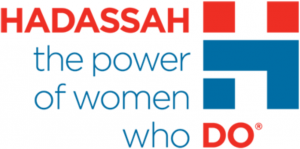Being Jewish
DNA Testing Adds Branches to Holocaust Survivors’ Family Trees

The concept of l’dor v’dor—“from generation to generation”—is central to Judaism, but what happens when generational lines were severed by the Holocaust? Thanks to the Holocaust Reunion Project, uprooted family trees can be rebuilt and long-lost relatives can be reunited or meet for the first time.
Originally co-founded by leading genealogists Jennifer Mendelsohn and Adina Newman in 2022 as the DNA Reunion Project, the pair relaunched it as an independent nonprofit last August. According to Mendelsohn, the relaunch has “allowed us to scale up,” taking what had been a pilot program with very limited resources to full scale. Funded entirely through the support of private donors, the co-founders hope to receive foundation grants to expand its mission of harnessing the power of commercial DNA testing with expert genealogical research. Their aim is to reunite Holocaust survivors and their children with living relatives and to illuminate the family histories that have been lost to genocide.
To date, the project has sent over 1,400 free DNA kits to Holocaust survivors and their children around the world, thanks to an in-kind donation from Ancestry.com, the largest genealogy testing company in the world. Mendelsohn and Newman also provide three hours of genealogical consultations at no cost to program participants.
Newman, whose grandmother was a Hadassah life member, called it “the biggest mitzvah I can be doing right now.” She added that the project always uncovers something interesting in a subject’s ancestry.

Most often, that takes the form of reconstructing and restoring what were thought to be lost records and branches on family trees or, for example, introducing third cousins who didn’t know of each other’s existence. And sometimes they hit the genealogical jackpot.
They cite as one of their biggest successes the case of two Polish Catholic women—Halina Michalowska and Krystyna Leszczynska—who were adopted as infants by separate families only to discover, with Mendelsohn and Newman’s help, that they were not only sisters but also Jews. The women had submitted their DNA at the urging of their grandchildren to learn more about how they had become orphans in 1941.
“We can’t promise a spectacular result for everyone,” Mendelsohn said, “but there is always something to be learned.”
In words of thanks to Mendelsohn and Newman, Audrey Sher, a daughter of survivors, puts it this way: “Every time I learn of the existence of a family member lost—learn their name, see a record related to them—I feel their spark, their soul, come into the present.”










 Facebook
Facebook Instagram
Instagram Twitter
Twitter
Leave a Reply